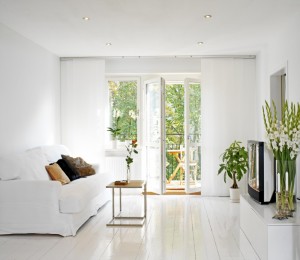Decorating Tips to Improve Indoor Air Quality

Believe it or not, but decorating choices during a construction or a renovation project within your home could be compromising your indoor air quality.
Recent studies indicate that your decor choices could be negatively impacting the indoor air quality in your home, thus impacting the health and well being of your family. There are, however, choices that can help to reduce any negative effects.
Things like the texture of materials you touch, materials used, and colour choices, can be harmful to your health. These potentially toxic products should be eliminated from your dream home design as much as possible. Here are a few suggestions and decorating tips to improve indoor air quality and help create a safe, healthy space…. In addition to some things that should be avoided at all costs.
Countertops: When deciding on the countertops you wish to install in your kitchen and bathroom, consider using Quartz instead of Granite. Granite countertops have been known to contain Radon, a radioactive gas that is formed by the breakdown of uranium rock and water in the soil. Cambria quartz, which is mined in Canada, as well as other quartz is usually certified with Green Guard for clean indoor air quality. Natural quartz stone has twice the strength as Granit, making it virtually impossible to harbour bacteria, it is ultimately maintenance free, and is a safe choice when looking for something that won’t compromise your indoor air quality.
Paint: Paint can contain VOC’s, which are harmful chemicals that can turn to toxic vapours at room temperature. It is important to look for paints that do not contain VOC’s. Low VOC, or NO VOC are the best options. An alternative could also be using water based paints which are easily cleaned up without using harmful chemicals.
Carpet: Carpeting throughout your home traps allergens. Many carpets contain an abundance of harmful chemicals. It is highly recommended that you use a non air quality impacting wood instead.
Flooring: Laminate and even some engineered and true hardwood can contain harmful chemicals that can emit gases throughout your living space. Formaldehyde has also become a concern of late, particularly in laminate flooring. Look for product labels and check with manufacturers to ensure the product has low VOC release and has not been a known formaldehyde culprit.
Cabinetry: The only way to ensure cabinets do not impact your indoor air qualtiy is to ensure you are using wood that not only contain a low VOC finish, but is also absent of formadehyde release. According to the Canadian Lung Association, pressed wood cupboards contain the proven carcinogen formaldehyde and can off-gass pretty substantial levels into our indoor air. Always look to ensure the cabinetry you are looking to install eco-friendly, and is certified for indoor air quality.
